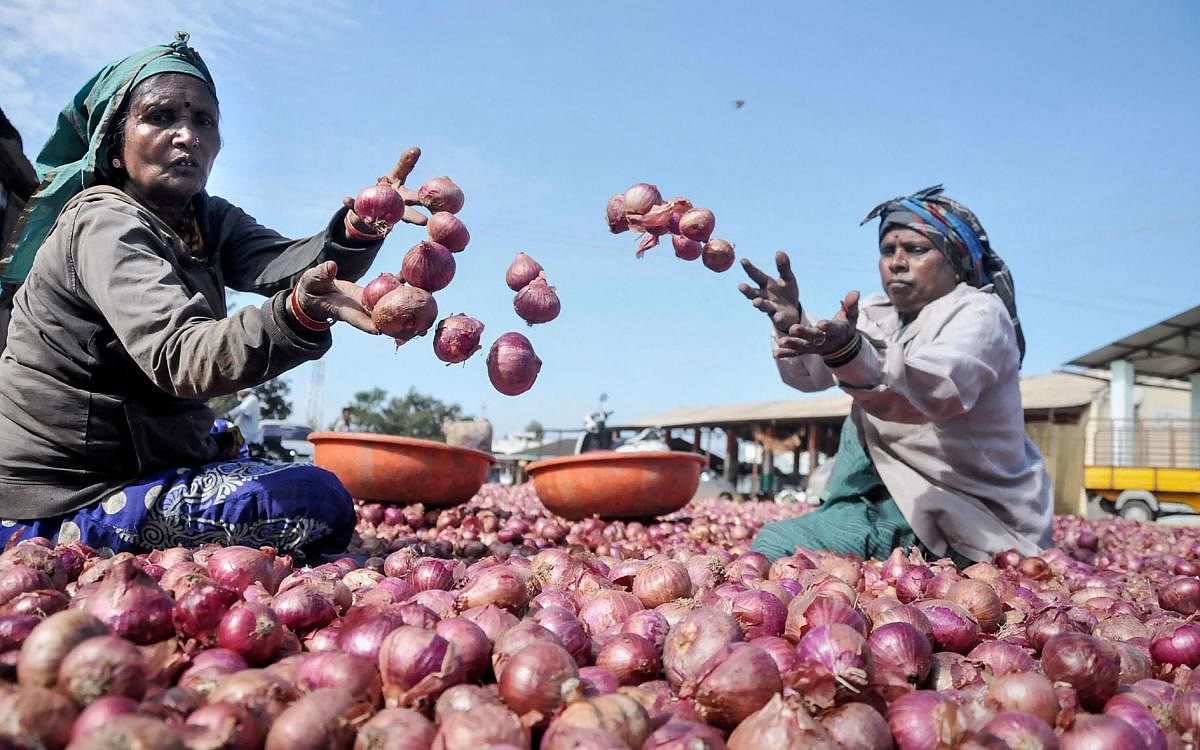
On December 7, 2018, then commerce minister Suresh Prabhu was very chuffed as he announced that the Union cabinet had approved the agricultural export policy. The country’s first-ever agri-export policy, he stressed.
It was certainly something that deserved applause, especially since it spoke about freeing farmers from state control, something no government has ever done. What particularly raised hopes was that one of the objectives was to “enable farmers to get benefit of export opportunities in overseas market.” It then went on to elaborate on the need for a stable trade policy regime, criticising the “tendency to utilise trade policy as an instrument to attain short term goals of taming inflation” and citing, as examples, the “ad-hoc ban or imposition of minimum export price for onion and non-basmati rice exports.”
The mention of onions was both ironic and natural.
Ironic, because it took less than a year for the hollowness of these lofty statements to be shown up. As onion prices spiked, the export incentive was withdrawn in June 2019, the minimum export price was increased on 13 September, and followed by a complete ban on the export of all varieties of onion on 29 September. Along side these measures, stock limits were also imposed on domestic trade in onions and over the next few months, these limits were lowered bit by bit.
Natural, because this has become something of a regular occurrence. Onion prices rise every year around September-November; there are sharp spikes every couple of years (it has been sharper this year); the urban middle class cries foul; this leads to hikes in minimum export price, export bans, the imposition of stock limits, anti-hoarding raids. The Opposition parties slam the government; the ruling party does some whataboutery – just as it is happening this time around. Then prices cool and the issue is forgotten till the next price spike, either in onion or some other food item.
Commentary on the latest onion crisis has suggested well-known solutions – government building a buffer stock of onions so that market interventions during price spikes don’t hurt farmers, the building of good and adequate storage capacity and giving a fillip to the food processing industry.
In 2012, after a similar crisis, the Competition Commission of India commissioned a study, Competitive Assessment of Onion Markets in India. It highlighted the same flaws in the onion market that are being highlighted today – the skewed role of traders, rather than farmers, in price formulation, mainly due to information asymmetry; the oligopolies and cartels created by the traders; the problems created by the structure and functioning of the Agricultural Produce Marketing Committees (APMCs).
The study suggested oft-repeated solutions: Doing away with the monopoly of the APMCs, encouraging the entry of new players/agents, improving market infrastructure, ending the practice of ad hoc and sudden export restrictions/bans.
Seven years on, the report lies ignored, as do its recommendations, which have been made by several agricultural economists and experts.
This story gets repeated across farm products. It is onions today, it could be potatoes tomorrow (there are some media reports about acreage under the tuber shrinking because of poor returns for farmers). And day after tomorrow it could be tomatoes (another product that swings between glut/rock bottom prices and scarcity/soaring prices) or pulses. The country saw similar knee jerk reactions to spikes in the prices of pulses some years back.
Underlying this is a far more basic issue – economic freedom for farmers. There is hardly any activity where farmers enjoy even a small fraction of the freedom that is available to those in the manufacturing or services sector. The focus of ease of doing business initiatives is only these two sectors. Agriculture is nowhere on the radar.
The only way to end the trade cartels that exploit both farmers and consumers is to allow competition in agricultural markets. Right now the APMCs have a monopoly on trade and they are captured by middlemen/traders’ lobbies. The Competition Commission study brings this out graphically. The central government has put out a model APMC law allowing the entry of private players. Many states have passed the law but not enacted the rules through which alone the law can be implemented. Agencies wanting to buy directly from the farmers are actively discouraged from doing so by state governments.
The much-touted e-NAM (national agricultural market) has failed to have the desired impact because it is merely digitising operations in existing mandis, not giving them competition. Private sector interest in cold chains and storage facilities is muted because of the Damocles sword of the Essential Commodities Act and stock limits hanging over its head.
Unfortunately, the very sections that denounce whichever party is in power whenever there are price spikes hurting consumers or production gluts will actively oppose these reforms. Even the smallest of steps towards any of these measures will invite lamentations about the ushering in of 'neo-liberal reforms’ in agriculture. Quite ignoring the fact that if even if one so-called neo-liberal reform had been implemented since 1991, Indian agriculture may not have been in such a sorry state.
Political parties that slam central governments on high prices for consumers/low prices for farmers will do zilch about getting their state governments to implement these reforms. Perhaps because if things actually improve, there will be nothing to protest about.
But as long as agriculture continues to be a political football and hostage to the worst of socialist ideas, there will be no hope for Indian farmers or consumers. When will India awaken to this realisation?
(The writer is a senior journalist and author. She tweets at @soorpanakha)
Disclaimer: The views expressed above are the author’s own. They do not necessarily reflect the views of DH.